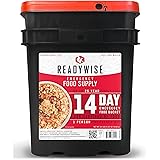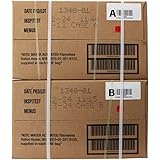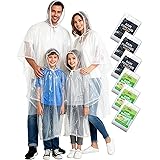How to Prepare Your Family for a Long-Term Crisis
Table of Contents
- Emergency Planning for Families
- Creating a Sustainable Food Supply
- Building a Family Communication Plan
- Financial Preparedness for Crises
Emergency Planning for Families
Understanding Your Family’s Needs
Before diving into the nitty-gritty of emergency plans, it’s essential to understand what your family specifically needs. I’ll tell you, every family dynamic is different. There might be young kids, elderly parents, or even pets to consider. This individuality will definitely shape your plan.
Think about any health conditions or special needs within your family. If someone is on medication, how will you ensure they don’t run out? Or, say you have young ones at home; how will you keep them safe and entertained during tough times?
Once you’ve identified these needs, you can start crafting a plan that includes everyone and sets a foundation for your preparations. It’ll be like a family project, and trust me, involving everyone makes it way easier—and a lot more fun!
Creating Your Emergency Plan
Alright, so you know what you need. Now, it’s time to write it down! Sit down with the family and map out your plan. I recommend prioritizing communication, shelter, food, and security. Don’t forget to designate roles. Who handles the pets? Who’s in charge of gathering supplies?
Make sure your plan includes escape routes and meeting points in case you get separated. And hey, practice these plans! Drills may sound lame, but they help everyone feel a bit more prepared and less panicked.
Also, consider how you’ll keep your plan updated. After all, life changes—kids grow, needs shift, and systems evolve. A quick family meeting every few months can go a long way in keeping everyone in the loop.
Basic Survival Skills
Look, I’m not saying you need to become a survival expert overnight, but learning a few key skills can be a game-changer. First up, basic first-aid knowledge is crucial. Knowing how to treat minor injuries can be super helpful when you can’t get to a hospital.
== > What if ... Get a FREE Subscription to PREPARE
Next is understanding how to purify water. Believe me, clean drinking water is non-negotiable. From boiling to filtration techniques, familiarize yourself with what works best in your area.
Lastly, consider outdoor skills like building a shelter or starting a fire. I know it sounds old school, but these skills can be lifesavers. You never know when you might need them!
Creating a Sustainable Food Supply
Assessing Your Family’s Dietary Needs
First, think about what your family actually eats. You’ll want foods that are calorie-dense and can last a while. Let’s face it, no one wants to eat plain rice for a month straight! I usually write down everyone’s favorite non-perishables and snack foods.
It’s also important to consider any dietary restrictions. If someone’s gluten-free or vegan, you’ve gotta accommodate that in your stockpile. No one likes a cranky family member when things get tough!
Finally, mix in some healthy options. Canned veggies, fruits, and nuts can keep things balanced. It’s all about keeping everyone fed and happy, right?
Food Preservation Techniques
Now that you’ve figured out what you need, let’s talk about preserving your food. Canning is one of the oldest methods around and can be really rewarding. I love to get the family together for a canning session. It takes time, but the rewards are worth it.
Freezing is another option, but remember—if the power goes out, that becomes a ticking time bomb on your food supply. Vacuum sealing is a great way to keep items fresh. I’ve found it helpful for meats and bulk purchases.
Don’t forget about the art of dehydrating! It’s pretty simple with the right tools, and it extends the life of fruits and veggies. Plus, dried foods can serve as amazing snacks during a crisis.
Developing a Gardening Plan
If you’re thinking long-term, growing your own food can be a lifesaver. Start small: herbs, tomatoes, or peppers are fairly easy to manage. I’ll be the first to admit; my thumb isn’t exactly green, but gardening can be a fun family activity.
Research what grows well in your climate and on your property. Raised beds or container gardening can save space and improve yield. As you get into it, you may find you enjoy getting your hands dirty!
Don’t forget to plan for the seasons! Have a rotation system in place so you can harvest year-round. The more self-sufficient you become, the better prepared you’ll be, and it’s also way healthier!
Building a Family Communication Plan
Establishing Communication Channels
When a crisis strikes, staying connected is key. Decide how you’ll communicate when traditional methods fail. Having a plan to connect through texts, social media, or even carrier pigeons (just joking—maybe!) is super important.
Set up a family group chat for quick updates, and maybe download a walkie-talkie app or connect on social media. Keep everyone’s phone numbers in one place so you can hand it off if needed.
It can get confusing, but having one designated family member who handles communication can streamline things. Choose someone calm and collected; you know, the level-headed one!
Designating Meeting Points
Let me paint you a picture—if you all get separated during an emergency, what’s the plan? Designating meeting points is critical. Talk about different scenarios: what if the neighborhood isn’t safe? Do you have alternative spots in mind?
Try to choose locations that everyone is familiar with, whether it’s a neighbor’s house, school, or a local park. Make sure everyone knows these spots and that they’re reachable within your safety parameters.
And please practice these scenarios! The more you discuss it, the more ingrained it will be in everyone’s mind, and when push comes to shove, you won’t be standing around confused.
Regular Updates and Drills
As things evolve, so should your plan! Sitting down every few months to discuss the current state of affairs and your plan helps ensure that everyone is on the same page. Talk about what worked well and what needs adjusting.
Drills can be valuable to make sure everyone knows their roles. Have fun with it! Pretending there’s a zombie apocalypse can make drills more enjoyable for the kids. It’ll help them take it seriously while still being fun.
Even if the situation feels far-fetched, regular updates can help everyone remain vigilant and aware. Trust me, staying prepared is a whole lot better than panicking when something happens!
Financial Preparedness for Crises
Assessing Your Financial Situation
Before diving into solutions, take stock of your current situation. Knowing your income, expenses, and savings will provide a solid foundation for preparing. You can’t build a financial plan without understanding where you’re at!
Once you know the lay of the land, consider any debt you may have. If there are outstanding loans or credit card balances, think about how they’ll affect you during a crisis. Addressing these will help free up funds when you may need them most.
Also, consider your insurance policies. Review them with your family to determine what’s covered and what isn’t. You want to be on the same page when it comes to policy limitations and what financial resources are available.
Creating an Emergency Fund
An emergency fund is an absolute must. I recommend aiming for three to six months’ worth of expenses, but start small if that feels overwhelming. Just be consistent! Set aside money each month and watch it grow; it’s a comforting feeling.
High-yield savings accounts can offer a better return, so look into those for your emergency fund. It’ll be a lifesaver in situations where you need cash fast. Having that little cushion provides peace of mind.
Don’t forget to discuss your savings goal with your family. It’s amazing how kids can contribute ideas too! They might have a few pennies saved up they want to add to the pot, making them feel part of the solution. It’s a family effort!
Stockpiling Useful Assets
Finally, let’s talk stockpiling—not just food, but also other assets you might need during a crisis, such as tools, fuel, or medical supplies. You might also consider trait-based assets, like your skills. Knowing how to fix a pipe or build something could be invaluable!
Gather useful tools and ensure they are well maintained. Think about non-perishable items that could aid in bartering. Toilet paper, batteries, and other household items might be in high demand if times get tough.
Overall, having physical goods and skills ensures that you’re not solely reliant on monetary resources. In a pinch, you can trade knowledge or items to make your situation a bit easier!
Frequently Asked Questions
What should I include in my emergency plan?
Your emergency plan should include communication methods, designated meeting spots, specific roles for each family member, and essential contacts. Remember to customize it based on your family’s unique needs!
How can I get my family involved in preparedness?
Engage your family by making it a shared experience. Organize fun drills, encourage everyone to research skills like gardening or food preservation, and involve all age groups in planning discussions.
What types of food are best for long-term storage?
Focus on non-perishable foods that are calorie-dense and nutritious. Canned goods, dried beans, grains, pasta, dehydrated fruits, and freeze-dried meals are fantastic options to consider.
How much money should I save for emergencies?
Ideally, aim for three to six months’ worth of expenses in your emergency fund, but start small. Saving even a little bit consistently can build a cushion that will help in tough times.






